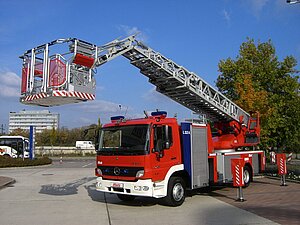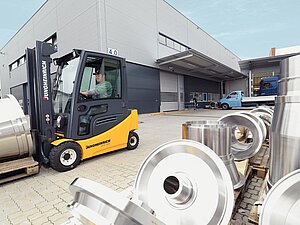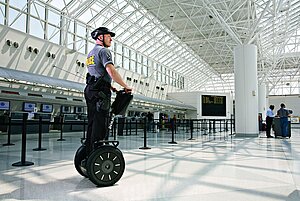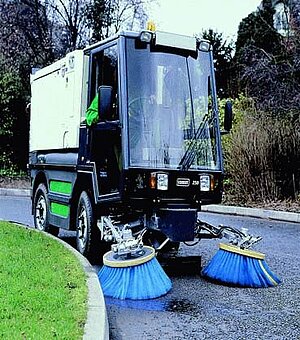Mobile vehicle
Mobile machinery such as construction, agricultural, and forestry machinery, as well as trucks or vehicles for recreational use (like Segways), and the versatile range of electric vehicles are very demanding on the sensor due to their external use.
Novotechnik sensors can be used in temperature ranges from -55 ° C up to +140 °C depending on the technology and design. They meet the standards in ingression protection up to IP 69K and are tested on the toughest requirements which surpasses the pure standard specifications. This includes the simultaneous influence of temperature, humidity and liquids. A particular focus is the robustness of the sensors against shock and vibration.
Due to the fact that the sensor unit is separated from the position marker, non-contact sensors can even be used for transmissive measurements. They are designed for high EMC protection to meet the requirements of mobile machines.
In the field of functional safety Novotechnik has more than 10 years of experience as a supplier to the automotive industry, especially in safety-critical applications.
Download brochure: More information about our sensors in mobile applications.
Robust angle sensors based on the Hall principle
The Hall technology in our contactless angle sensors of the RFC, RSA and RFE series is presented in a comprehensible and informative manner. A look behind the scenes at Novotechnik as well as some application examples in mobile applications, such as in agricultural machinery.
A typical example of the variety of hydraulic platforms and aerial ladders is the fully automated hydraulic turntable ladder with a platform height of 32 meters and an articulated work platform, which allows bending up to 75 degrees. However, in order to ensure a level platform, the boom angle has to be measured precisely. The specifications for the sensor, which is mounted on axis with the pivot point of the boom, are very tight.
A sensor for this mobile application needs to be robust and electromagnetically compatible, as well as work properly in a wide temperature range. The sensor in this application needs to provide reliable measurement values even with existing mechanical tolerances and play in the joint bearing.
There is a trend in the automotive industry to transmit all driver input commands electronically. Electronic systems nowadays replace elaborate hydraulic system designs and improve ease of use as well as safety levels. Such smart solutions are only possible using reliable position sensors which survive the harsh environment in mobile applications and guarantee the required precision. Steer-by-Wire systems find their way into construction and earth moving machines increasingly, for example as steering angle input devices or as actual position value devices on hydraulic actuators. Position sensors can also monitor the safe and precise movement of forks on a tractor.
Road sweepers have to be able to maneuver between parked cars, road works and a wide variety of other obstructions. The four-wheel steering reduces the turning radius for such vehicles.
Each vehicle is equipped with two potentiometric angle sensors series SP-2800. They are fitted directly to the kingpins of one front wheel and one rear wheel. When the driver turns the steering wheel a microcomputer adjusts the relative front/rear wheel angles to provide optimum performance. He relies on the signal of the rotary sensor for the angle data.






